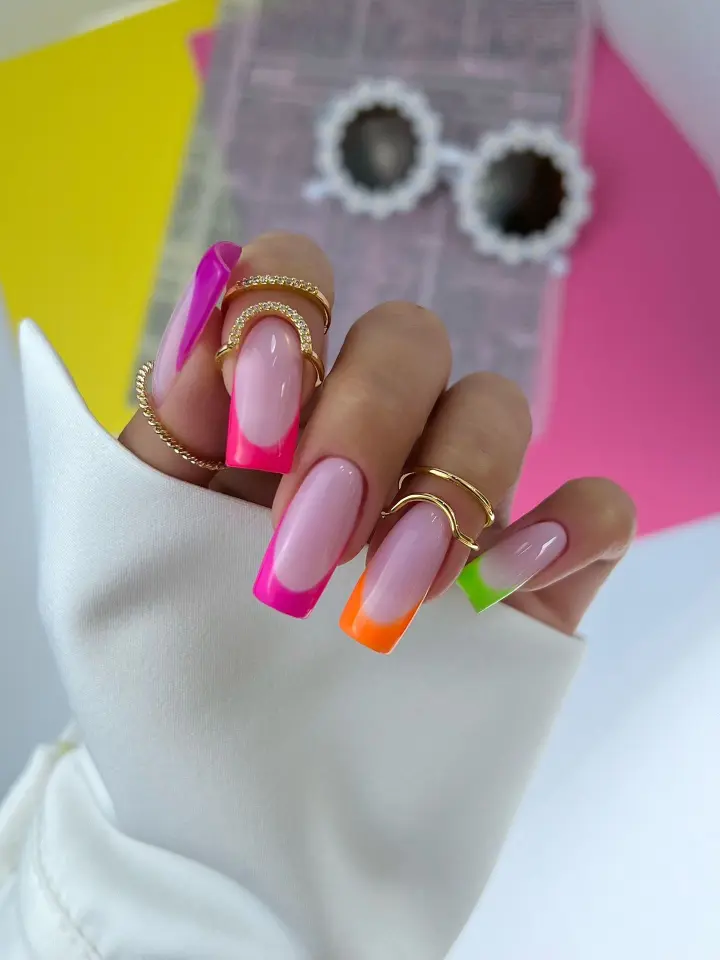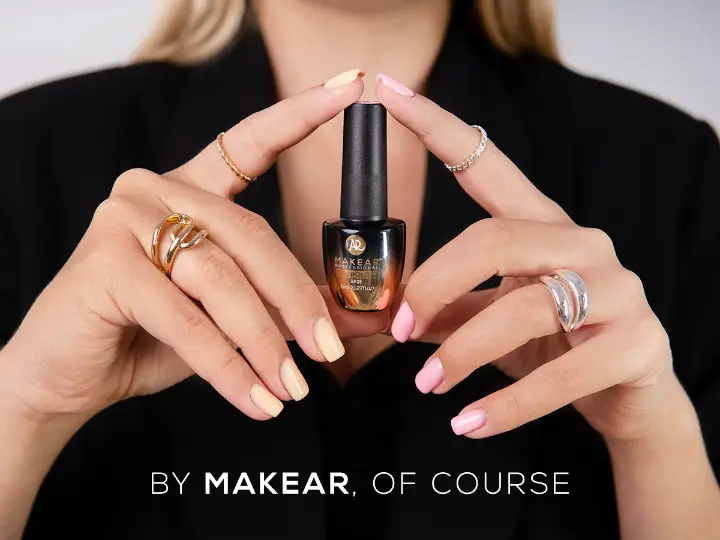When it comes to creating long-lasting, salon-quality manicures, the base coat is the unsung hero. While nail enthusiasts often focus on gel polish colors and nail art, the choice of base product plays a major role in how strong, durable, and flawless the nails look and feel. Two of the most popular options in the professional nail industry are Rubber Base and Builder Base.
Both are designed to provide strength and durability, but they serve slightly different purposes and are suitable for different types of nails. If you’ve ever wondered which one is best for you or your clients, this article will walk you through the differences, benefits, and professional tips for using Rubber Base and Builder Base effectively.
At MakearME, the exclusive distributor of Makear Gel Products in the GCC, we specialize in offering nail technicians and salons premium-quality gel systems. Let’s dive into the comparison of Rubber Base and Builder Base, so you can make the best choice for stronger, healthier nails.

Understanding the Role of a Base in Gel Nails
Before exploring Rubber and Builder bases, it’s important to understand what a base coat does.
- Protects the natural nail: A good base coat creates a barrier between the natural nail and gel polish, preventing staining and damage.
- Ensures adhesion: It helps the gel polish bond better, minimizing the risk of peeling or lifting.
- Adds strength: Some bases are formulated to reinforce weak or brittle nails, making them more resistant to breakage.
This is where Rubber Base and Builder Base shine—both are designed to give nails additional support beyond a regular base coat.
What Is Rubber Base?
Rubber Base is a flexible, thicker-than-usual base coat specifically formulated for weak, thin, or brittle nails. It contains rubber-like polymers that allow the nail to bend slightly without breaking.
Key Features of Rubber Base:
- Medium-thick consistency for easy application.
- Provides flexibility to prevent cracks and chips.
- Self-leveling, which makes it great for achieving a smooth nail surface.
- Ideal for short to medium-length nails.
- Can be used as a strengthening layer under gel polish.
Benefits of Rubber Base:
- Flexibility for Weak Nails – Unlike hard coatings, it moves with the nail, reducing the risk of snapping.
- Stronger Natural Nails – Acts as a cushion, reinforcing natural nails without making them overly rigid.
- Perfect for Everyday Wear – Ideal for clients who want natural-looking nails with added strength.
- Smooth Finish – Evens out imperfections such as ridges or dents in the nail plate.
Rubber Base is especially popular among clients who struggle with peeling nails, constant breakage, or who use their hands daily for typing, light tasks, or household chores.

What Is Builder Base?
Builder Base (sometimes referred to as Builder in a Bottle or BIAB) is a stronger, more rigid gel product designed for building structure and adding length.
Key Features of Builder Base:
- Thicker viscosity compared to Rubber Base.
- Provides durability and hardness.
- Can be used to create nail extensions with forms or tips.
- Allows nail techs to fix uneven nail surfaces or broken corners.
- Ideal for medium to long nails.
Benefits of Builder Base:
- Extra Strength and Hardness – Designed to handle more stress and pressure, making it perfect for long nails.
- Nail Extension Capability – Unlike Rubber Base, Builder Base can add length to natural nails.
- Durable Overlay – Creates a strong structure that supports nail art and detailed designs.
- Repair and Correction – Excellent for reshaping or repairing damaged nails.
Builder Base is best suited for clients who want longer nails, are looking for strong overlays, or want to achieve a more salon-style enhancement.
Key Differences Between Rubber Base and Builder Base
|
Feature |
Rubber Base |
Builder Base |
|
Consistency |
Medium-thick |
Thick |
|
Flexibility |
High – bends with nails |
Low – rigid, provides hardness |
|
Strength Level |
Moderate – strengthens weak nails |
High – builds strong, durable structure |
|
Use Case |
Weak, brittle, short nails |
Medium to long nails, extensions |
|
Nail Repair |
Smooths ridges, minor imperfections |
Can repair broken nails, add shape |
|
Application |
Self-leveling, easy to use |
Requires skill for shaping/structuring |
|
Longevity |
2–3 weeks |
3–4+ weeks |
Which One Should You Choose?
The choice between Rubber Base and Builder Base depends on the nail condition, desired length, and lifestyle.
- Choose Rubber Base if:
- You have weak or brittle natural nails.
- You prefer short to medium nail length.
- You want flexibility and natural reinforcement.
- Choose Builder Base if:
- You want to extend your nails.
- You prefer medium to long nails with a strong, structured overlay.
- You need to repair or reshape damaged nails.
Professional Application Tips
To get the best results, proper application is key.
Applying Rubber Base:
- Prep the nail (clean, file, push cuticles).
- Apply a thin layer of Rubber Base and cure under LED/UV lamp.
- For extra strength, apply a second thin coat before applying gel polish.
Applying Builder Base:
- Prep the nail thoroughly to ensure adhesion.
- Apply a thin slip layer, then build the structure with a bead of Builder Base.
- Use a nail form or tip if creating extensions.
- Cure thoroughly under LED/UV lamp.
- File and shape before applying color or top coat.
Why Nail Professionals Prefer Makear Rubber and Builder Bases
At MakearME, we provide GCC nail professionals with premium-quality Rubber and Builder Bases trusted by salons worldwide. Makear products are known for:
- Superior adhesion – reduces lifting and peeling.
- Consistent texture – ensures smooth application.
- Durability – clients enjoy nails that last longer with fewer breakages.
- Wide compatibility – works seamlessly with Makear gel polish and nail art systems.
Makear’s Rubber Base is perfect for natural nail strengthening, while the Builder Base offers unmatched strength for structured nails and extensions.
Common Questions About Rubber vs. Builder Base
- Can I use Rubber Base and Builder Base together?
Yes! Many nail technicians use Rubber Base as a flexible foundation and then build structure with Builder Base. - Which lasts longer—Rubber or Builder?
Builder Base generally lasts longer because of its rigidity, but Rubber Base is ideal for natural, short nails that need flexibility. - Can beginners use Builder Base?
Yes, but it requires more practice. Rubber Base is beginner-friendly, while Builder Base requires shaping and structuring skills. - Do both need a top coat?
Yes. A quality top coat will seal the design, add shine, and extend durability.
Final Thoughts
Both Rubber Base and Builder Base are essential products in a professional nail technician’s toolkit. Rubber Base provides flexible strength for weak or short nails, while Builder Base delivers rigid support and structure for extensions and long-lasting overlays.
At MakearME, we believe that choosing the right base depends on the individual client’s needs, nail condition, and lifestyle. Whether you’re a professional nail artist or a salon owner, investing in high-quality bases like Makear Rubber Base and Makear Builder Base ensures stunning, long-lasting manicures your clients will love.